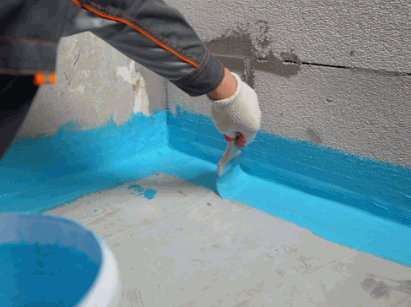Dealing with damp walls can be a major headache for homeowners. From musty smells to peeling paint, the signs of dampness can be both unsightly and a health hazard.
In this article, we will explore the importance of damp proofing, the common signs of dampness in a wall, and the causes behind it. We will also discuss the steps to dampproof a wall, including identifying the type of dampness, repairing structural issues, and using waterproofing products. We will delve into long-term solutions for damp proofing, such as regular maintenance and exterior waterproofing. If you're looking to tackle damp issues in your home, you won't want to miss this comprehensive guide.
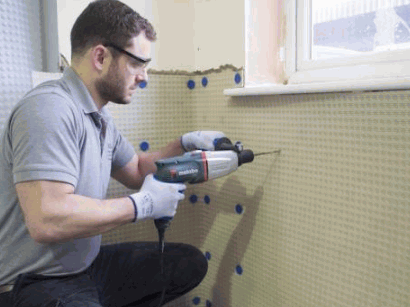
Contents
Dampproofing is a crucial process in construction that involves the application of materials and techniques to prevent moisture from penetrating the walls and causing dampness.
This is essential for maintaining the structural integrity of buildings and ensuring a healthy indoor environment.
Common construction materials used for damp proofing include bitumen, plastic sheets, and liquid-applied membranes, which form a barrier against water ingress.
Techniques such as tanking, cavity wall insulation, and damp proof courses are frequently employed to effectively mitigate damp issues.
It's important to address damp problems promptly to prevent mold growth, degradation of building materials, and potential health hazards for occupants.
Learn more: How To Damp Proof A Wall
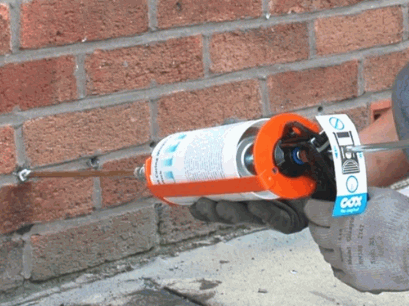
Damproofing is essential for maintaining the structural integrity of a building and preventing moisture-related damage to walls. This ensures long-term durability and minimizes the need for costly maintenance and repairs.
Moisture can have damaging effects on construction materials, including mold growth, concrete deterioration, and corrosion of metal reinforcements. This can weaken the structural integrity of a building, posing a safety risk. It's important to regularly assess, maintain, and take preventive measures to address potential damp issues early on. This can save time and resources in the long run, ensuring a secure and resilient structure.
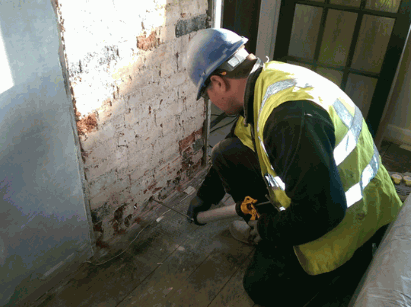
Identifying signs of dampness in a wall is crucial for prompt intervention and effective damp proofing. Common indicators include musty smells, visible damp patches, peeling paint or wallpaper, and crumbling plaster.
Musty smells are often the first hint of dampness, highlighting the presence of excess moisture. Visible damp patches and peeling paint or wallpaper are telltale signs of water infiltration while crumbling plaster can indicate ongoing water damage.
A thorough assessment and survey process involving moisture meters and thermal imaging can pinpoint the extent of the issue. Condensation can lead to damp problems, fostering mold and mildew growth, which can further deteriorate the wall structure and pose health risks. It's crucial to address these issues promptly to prevent long-term damage and maintain a healthy indoor environment.
A musty smell emanating from a wall often indicates the presence of dampness, requiring thorough assessment and survey to identify the underlying moisture-related issues and initiate appropriate interventions.
The connection between musty odors and damp walls is crucial to recognize, as it signifies potential structural and health hazards. Conducting a comprehensive survey can unveil the extent of water ingress, mold growth, and deterioration.
Such assessments involve utilizing specialized equipment to measure moisture levels and identify areas of concern. By carefully scrutinizing these factors, professionals can propose effective solutions to mitigate dampness and its consequences, safeguarding the integrity and inhabitants of the property.
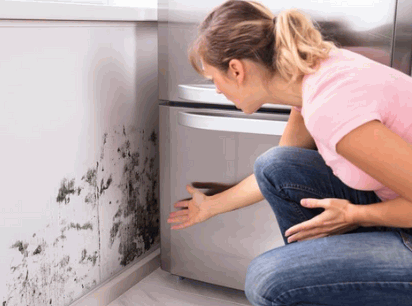
The appearance of visible damp patches on a wall signals the presence of moisture infiltration, necessitating thorough assessment and survey to pinpoint the source of dampness and implement appropriate remedial measures.
Visible signs of dampness on walls can have significant implications for the structural integrity and indoor air quality of a building. The assessment process involves identifying potential sources of water ingress, such as leaking pipes, rising dampness, or condensation, to accurately diagnose the underlying issue.
This comprehensive approach ensures that targeted solutions can be tailored to address the specific type of dampness, whether it be penetrating damp, rising damp, or condensation-related moisture problems. Proper assessment is crucial as it allows for the implementation of effective and long-lasting remedial measures to mitigate the detrimental effects of dampness on a property's condition and occupants' health.
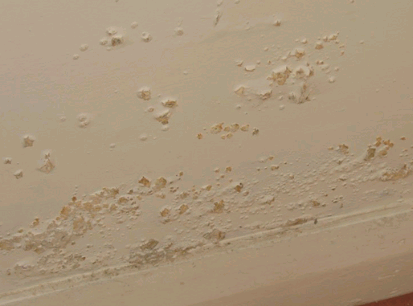
Peeling paint or wallpaper on a wall is often an indication of underlying dampness, necessitating thorough assessment and survey to identify the root cause of moisture infiltration and undertake appropriate remediation.
This visual warning sign of peeling paint or wallpaper is a common manifestation of the presence of dampness within the wall structure. Understanding the relationship between peeling paint and damp walls is crucial for homeowners and property managers.
It is essential to conduct a professional assessment to accurately diagnose the extent of moisture intrusion and its sources. Such assessments may involve thorough inspections, moisture measurements, and utilizing advanced tools to pinpoint the exact areas affected by dampness. By identifying and addressing these issues promptly, long-term structural integrity and indoor air quality can be safeguarded.
Check out: Can You Paint Over Damp Proof Paint
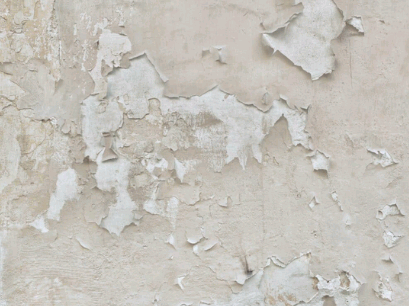
The presence of crumbling plaster on a wall often indicates moisture-related deterioration, necessitating comprehensive assessment and survey to identify the underlying dampness and implement suitable remedial actions.
This deterioration not only affects the aesthetic appeal of the wall but also poses potential structural risks if left unaddressed.
Conducting a thorough assessment is crucial to determine the source of moisture infiltration, whether it's from plumbing leaks, rising dampness, condensation, or other factors. Such surveys involve moisture meters, thermal imaging, and visual inspections to accurately diagnose the extent of dampness and to devise a targeted plan for effective remediation.
Ignoring these signs of dampness can lead to further decay and mold growth, posing health hazards and compromising the integrity of the building structure.
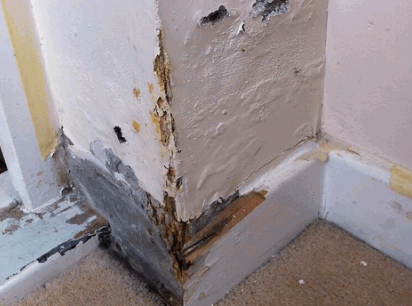
Damping walls can be attributed to various factors, including rising dampness, penetrating dampness, and condensation, each presenting distinct challenges that necessitate targeted damp proofing solutions.
Rising damp occurs when groundwater rises up through the walls via capillary action, often due to a faulty damp proof course or inadequate drainage.
Penetrating dampness, on the other hand, results from water seeping through exterior walls due to issues such as damaged roofs, cracks, or gaps in brickwork.
Condensation forms when warm, moist air comes into contact with colder surfaces, leading to water droplets accumulating on the walls.
Addressing these specific causes is crucial to effectively combatting dampness and preserving the structural integrity of buildings.
Rising dampness occurs when moisture from the ground ascends through capillaries in walls, necessitating effective damp proofing treatments such as the application of sealants to prevent further infiltration and damage.
This type of dampness can be particularly problematic as it can lead to unsightly watermarks, mold growth, and structural deterioration if left untreated.
Specialized damp proofing treatments, such as chemical damp proof courses and waterproof membranes, are crucial to address rising dampness effectively. These treatments create a barrier to inhibit the upward movement of moisture within the walls, thereby safeguarding the integrity of the building and preserving its internal environment.
It's important to engage professional damp specialists to assess the extent of the issue and recommend the most appropriate damp proofing measures based on the specific characteristics of the property and the severity of the moisture infiltration.
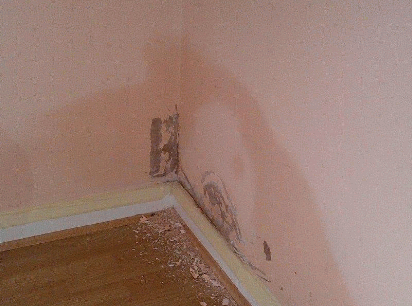
Penetrating dampness occurs when external moisture penetrates through walls. This highlights the importance of waterproof membranes and effective construction barriers to prevent water ingress and subsequent dampness.
This type of dampness can result from various factors such as damaged brickwork, deteriorated pointing, or inadequate protective coatings on the external walls.
It is crucial to address this issue promptly as penetrating damp can lead to structural damage, mold growth, and deterioration of the internal wall finishes. Waterproof membranes, like bituminous or cementitious coatings, and construction barriers, such as cavity walls and damp proof courses, play a vital role in safeguarding buildings against moisture infiltration and preserving their structural integrity.
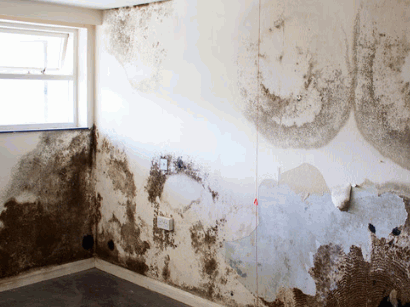
Condensation on walls occurs due to excessive moisture in the air, underlining the significance of effective ventilation and drainage systems to mitigate humidity and prevent condensation-related dampness.
This emphasizes the need to ensure proper airflow within the property, as inadequate ventilation can lead to stagnant moisture, providing a conducive environment for condensation.
Integrating efficient drainage solutions, such as properly functioning gutters and downspouts, assists in directing water away from the building's foundation, reducing the risk of moisture seepage into the walls.
Controlling indoor humidity levels through the use of dehumidifiers or increasing natural ventilation can also play a vital role in minimizing condensation and its associated dampness issues.
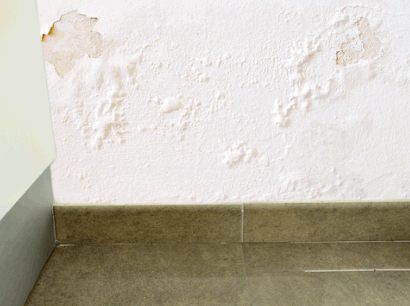
Damp proofing a wall involves a structured process of identifying the type of damp, addressing structural issues, installing damp proof courses, using waterproofing products, improving ventilation, and maintaining gutters and downspouts to prevent moisture infiltration and dampness.
Identifying the type of damp is crucial as it determines the appropriate course of action. Structural issues such as cracks or leaks must be repaired to prevent further moisture ingress.
Installing damp proof courses, often made of materials like bitumen or plastic, provides a barrier against rising dampness. Waterproofing products like sealants and membranes further reinforce the wall's resistance to water. Improved ventilation helps reduce condensation, while regular maintenance of gutters and downspouts prevents water from accumulating near the walls.
The first step in damp proofing a wall involves accurately identifying the type of damp present, which forms the basis for subsequent targeted repairs and damp proofing interventions.
When faced with a damp issue, it's important to determine whether it is caused by rising dampness, penetrating dampness, or condensation. This allows professionals to tailor their approach accordingly.
For example, rising damp may require the installation of a physical damp proof course, while penetrating damp may involve repairing defective pipes or waterproofing external walls. It's also crucial to assess the extent of moisture damage and identify any contributing factors, such as poor ventilation or drainage issues, before implementing a repair strategy. This comprehensive approach ensures that the damp issue is not just masked but addressed at its root cause, resulting in long-term protection for the wall.
Addressing any underlying structural issues in a wall is essential for effective damp proofing. This requires targeted repairs to reinforce the integrity of the construction and prevent moisture infiltration.
Repairing these structural issues involves a thorough assessment of the wall's stability. This includes addressing cracks, leaks, and areas of weakness.
By strengthening the structural elements, such as foundations, walls, and drainage systems, the repair process significantly enhances moisture control within the building.
Proper repair not only prevents further damage from moisture but also ensures the long-term durability of the structure. This creates a safe and comfortable environment for occupants.
As moisture-related issues can lead to extensive damage, investing in timely structural repairs is crucial for maintaining the overall integrity of the building.
Installing a damp proof course is a critical step in damp proofing a wall. This involves the use of specialized materials and techniques to create a barrier that prevents moisture from rising and causing dampness.
This process is essential to protect buildings from the damaging effects of dampness, such as mold growth, decay of building materials, and potential health hazards. Common materials used for damp proof course installation include bitumen, plastic sheets, or chemical injection systems.
These materials are carefully applied to the base of walls or within masonry to form an impermeable barrier. Techniques such as cavity wall insulation and the use of waterproof membranes play a vital role in ensuring the effectiveness of the damp proof course. The installation of a damp proof course is a proactive measure to safeguard against the detrimental impact of moisture infiltration.
Utilizing waterproofing products is essential in damp proofing a wall. This requires the application of specialized solutions and sealants to create a protective barrier against moisture infiltration and dampness.
Waterproofing products are essential for protecting structures from the damaging effects of water, including mold, mildew, and structural deterioration. These solutions come in various forms, such as liquid-applied membranes and cementitious coatings, to cater to different construction needs.
Advanced technology sealants are also available to provide long-lasting protection and ensure the durability of walls against moisture penetration. By utilizing these products, property owners can extend the lifespan of their walls and maintain a dry, comfortable indoor environment.
Enhancing ventilation in the vicinity of a wall is crucial for preventing moisture buildup, controlling humidity levels, and mitigating the risk of condensation-related dampness.
Improved ventilation helps to facilitate air circulation, allowing moisture to dissipate and reducing the chances of dampness accumulation. This aids in creating a healthier indoor environment and preserving the structural integrity of the building.
Proper ventilation also plays a pivotal role in preventing mold growth, as reduced moisture levels inhibit the conditions conducive to mold proliferation. By incorporating effective ventilation systems, property owners can proactively address damp related issues and maintain a comfortable and safe living or working environment.
Regular maintenance of gutters and downspouts is essential to prevent water accumulation near walls, ensuring effective drainage and minimizing the risk of moisture infiltration and subsequent dampness.
This maintenance involves clearing debris, such as leaves and twigs, which can obstruct the flow of water within the gutters. When the gutters are clogged, water can overflow, seeping into the walls and leading to potential dampness problems.
Properly functioning gutters and downspouts redirect water away from the foundation of the building, preventing water from pooling and causing structural damage. By keeping gutters and downspouts clean and free-flowing, homeowners can effectively safeguard their properties from damp issues.
Implementing long-term solutions for damp proofing involves regular maintenance, proper landscaping and drainage, exterior and interior waterproofing, and engaging the expertise of specialists to ensure sustained protection against dampness.
Consistent maintenance plays a crucial role in preventing damp issues by addressing potential vulnerabilities in the structure. Alongside this, strategic landscaping can direct water flow away from the building, reducing the risk of water seepage.
Waterproofing the exterior and interior surfaces acts as a protective barrier against moisture intrusion. Collaboration with specialists ensures that the damp proofing approach is tailored to the specific needs of the property, providing a comprehensive and effective solution for long-term damp prevention.
Regular maintenance of walls is pivotal in preventing dampness. This involves periodic assessment, repairs, and the use of durable construction materials to ensure ongoing protection against moisture infiltration.
This regular maintenance is crucial in identifying any signs of dampness early on and addressing them promptly. This prevents the potential spread of moisture-related issues and protects the structural integrity of the building.
A thorough assessment by professionals is necessary to determine the extent of damage and recommend the most effective repair methods. Additionally, utilizing high-quality materials is key as they offer long-lasting protection and resilience against the challenges posed by damp conditions.
Effective landscaping and drainage measures around walls are essential for preventing water accumulation, controlling moisture levels, and minimizing the risk of dampness. This often requires input from specialist professionals.
Landscaping features, such as sloping the ground away from the structure and using gravel or mulch, play a crucial role in directing water away from the foundation. This helps prevent water seepage into the building.
In addition, proper drainage systems, including gutters, downspouts, and French drains, are essential for channeling water away from the building. By integrating these elements, landscaping, and drainage work together to create an effective moisture control barrier. This safeguards the building from the damaging effects of dampness.
Exterior waterproofing of walls is a proactive measure that involves the application of specialized materials and techniques by professional specialists to create robust barriers against moisture infiltration and dampness.
This process plays a critical role in safeguarding the structural integrity of buildings. Moisture infiltration can lead to issues such as mold growth, decay, and damage to building materials. By engaging expertise in exterior waterproofing, property owners can ensure their structures remain resilient against humidity, rainfall, and extreme weather conditions.
High-quality waterproofing materials and precise application methods provide long-term protection, making it essential for the overall longevity and durability of the construction.
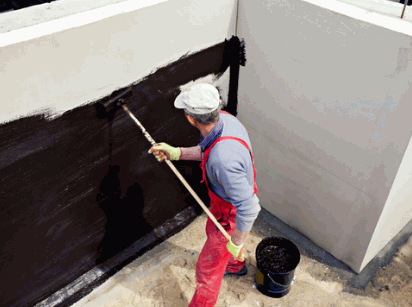
Interior waterproofing of walls requires the expertise of specialist professionals and the use of effective construction materials to create resilient barriers against moisture infiltration and dampness from within the building structure.
This form of damp proofing is essential for maintaining the structural integrity of buildings by preventing water damage, mold growth, and deterioration of interior surfaces.
Specialist waterproofing professionals employ various advanced techniques, such as the application of waterproofing membranes and sealants, to ensure a comprehensive defense against water intrusion. By utilizing high-quality construction materials specifically designed for waterproofing applications, such as liquid-applied membranes and drainage systems, these specialists can effectively safeguard interior spaces from the detrimental effects of dampness and water penetration.
